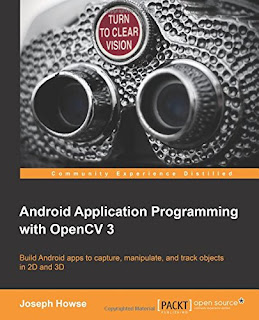About This Book
- Capture and display real-time videos and still images
- Manipulate image data using OpenCV and Apache Commons Math
- A step-by-step guide to building Android and CV applications
If you are a Java developer who is new to computer vision and would like to learn through application development, then this book is for you. You are expected to have a mobile device running Android 2.2 (Froyo) or greater, including a camera. Experience in Java is a must.
What You Will Learn
- Install OpenCV and an Android development environment on Windows, Mac, or Linux
- Control a camera and use its perspective in augmented reality
- Share photos with other apps via Android's MediaStore and Intent classes
- Create GUIs and handle events using Android activities and OpenCV
- Train an image recognizer that can locate famous paintings in a scene
- Apply "curves" and other color transformations to simulate the look of old photos
- Apply convolution filters that sharpen, blur, emboss, or darken the details of an image
Android Application Programming with OpenCV 3 is a practical, hands-on guide to computer vision and mobile app development. It shows how to capture, manipulate, and analyze images while building an application that combines photography and augmented reality. To help the reader become a well-rounded developer, the book covers OpenCV (a computer vision library), Android SDK (a mobile app framework), OpenGL ES (a 3D graphics framework), and even JNI (a Java/C++ interoperability layer).
Now in its second edition, the book offers thoroughly reviewed code, instructions, and explanations. It is fully updated to support OpenCV 3 and Android 5, as well as earlier versions. Although it focuses on OpenCV's Java bindings, this edition adds an extensive chapter on JNI and C++, so that the reader is well primed to use OpenCV in other environments.

No comments:
Post a Comment